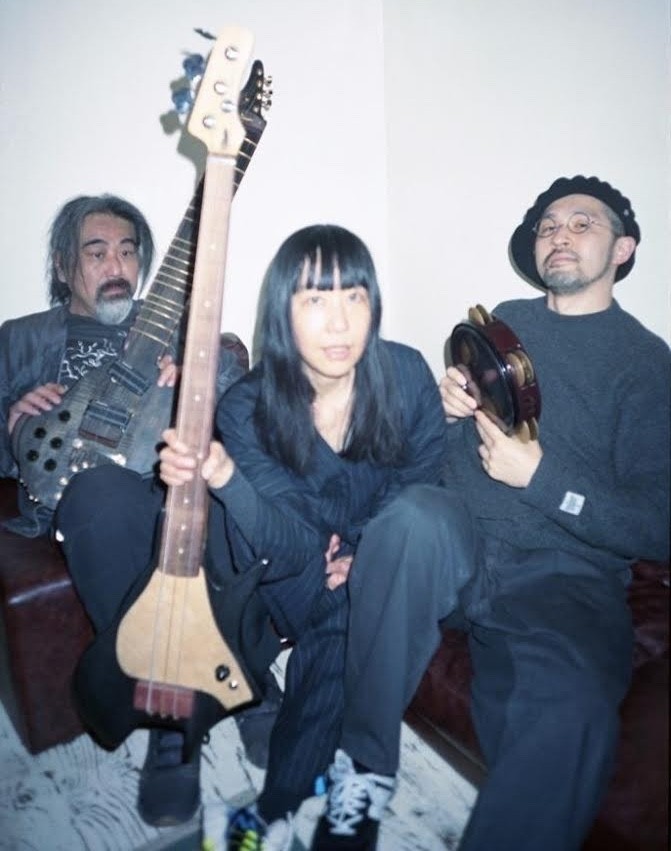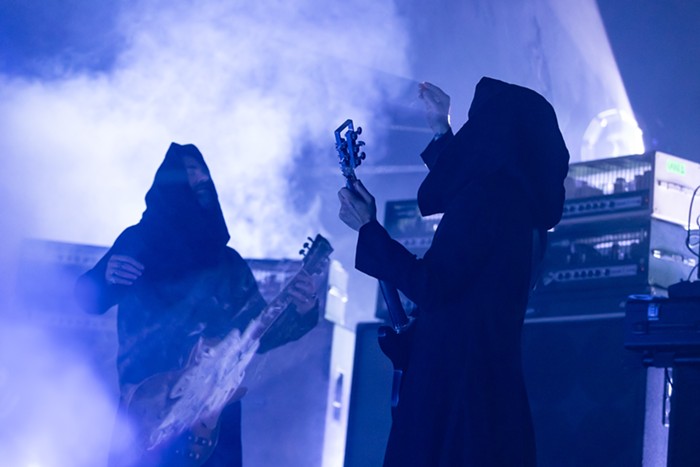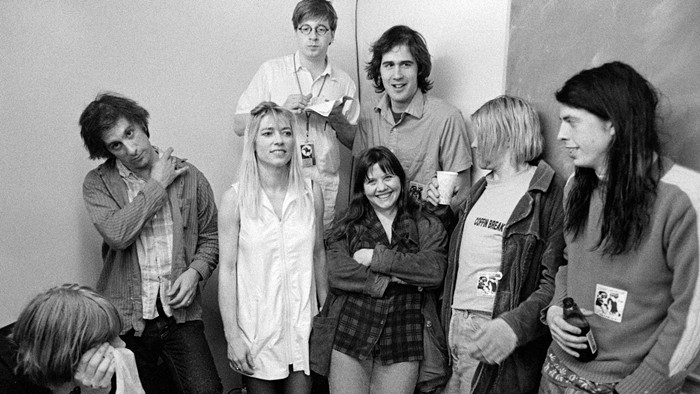Mondays at the Baltic Room, 9 pm-2 am, $5 (ladies free before 11 pm).
Every Monday night, I ♥ Shiva fills the elegant Baltic Room with an ebullient (and often booming) mix of new music from India and its satellites--international cities like London, Toronto, New York, and other metropolitan centers that have concentrated clusters of South Asians. Though Seattle has a very minor place in this involved system of cities and communities that postcolonial scholars often describe as "the South Asian diasporic culture," there is a growing local community that is drawn in significant numbers to the Indian-based music that I ♥ Shiva amplifies weekly.
First established and developed by DJ Nasir and Lawrence Martin, the I ♥ Shiva sound system is now operated by DJ Peter Madril, who spins discs on a fancy Pioneer CDJ-1000 ("the best in the business," he tells me), with Angel, who scratches records on a traditional turntable, and William Gilchrist, who plays live percussive instruments (tabla, dumbek, and dohl) along with members of a dohl collective who regularly descend from Vancouver, BC. The sound system also features guest DJs, the most notable of whom has been San Francisco-based DJ Cheb i Sabbah, whose dub-deepened (or complicated) ragas were responsible for DJ Peter Madril's radical conversion from industrial-goth, which he famously played at the Vogue for many years, to the technologized hybrids that have been emerging in India--and its related international scenes--since the early '90s. "I got tired of all that darkness and gloom," Madril tells me while setting up the sound system at the Baltic Room. "Then I saw DJ Cheb i Sabbah play and knew that was it. I started collecting and pursuing the music."
To move from industrial-goth to, say, techno-bhangra is no small matter; it's like traveling from a planet that has no sun or summer to one that is dazzled by two blazing suns that never set. Industrial-goth draws its gloom from 19th-century Europe, with its exploited industrial proletariat, black smokestacks, and monstrous factory machines. Bhangra, which is the defining beat of the I ♥ Shiva sound system, has its origins in rural 15th-century Punjab (Northern India), with its farmers, its harvest and wedding festivals. Bhangra is driven by a fury of drums, whose energy is elemental but patterns are dense and complex. It is at once a head and body charge, constructive and destructive, passionate and intellectual--a hypnotic, liberating, demanding, brainy sound that in its current form has been revised, reconfigured, and remixed with European electronica, Jamaican digital, and American high-tech forms.
One of DJ Peter Madril's favorite Monday-night tracks, "Mundian To Bach Ke" (by London-based Panjabi MC--it's on Madril's new compilation CD, I ♥ Shiva Volume 1), offers a perfect example of modern, revamped bhangra. It's centered and propelled by a bhangra groove that at intervals is matched with bass and an old-school hiphop beat. Threading through the double beats is a mechanically plucked sitar that fades into and out of the techno Knight Rider-theme pulse. Crowning this transcultural polyphony is Panjabi MC's rap, delivered in the majestic manner of royal trumpets. Though recognizably based on American meters and accents, Panjabi MC's re-articulation of rap in his fiery and dexterous mother tongue is so thoroughly realized that one could easily believe that American rap had its source in India rather than the other way around.
"We call this music Asian Dub, Asian Massive, but it's not all from just South Asia, it's mixed with Middle Eastern and North African sounds," explains Lawrence Martin, who also goes by the name DJ Salinger. "There are many levels to the music. There is the bhangra music, with its rolling dohl drums; then there's the Bollywood scores, which are made by composers like A. R. Rahman; Hindi music, which uses tablas, sitars, and ragas, and what we in the West usually associate with traditional Indian music; and fusion music, which is what artists like Talvin Singh and DJ Cheb i Sabbah actually make. As a large portion of our audience is Punjabi, they want to see dohl drummers perform with the DJs. But we don't limit ourselves to one music or region or instrument. There are a lot of other things to enjoy in this new art form."



















